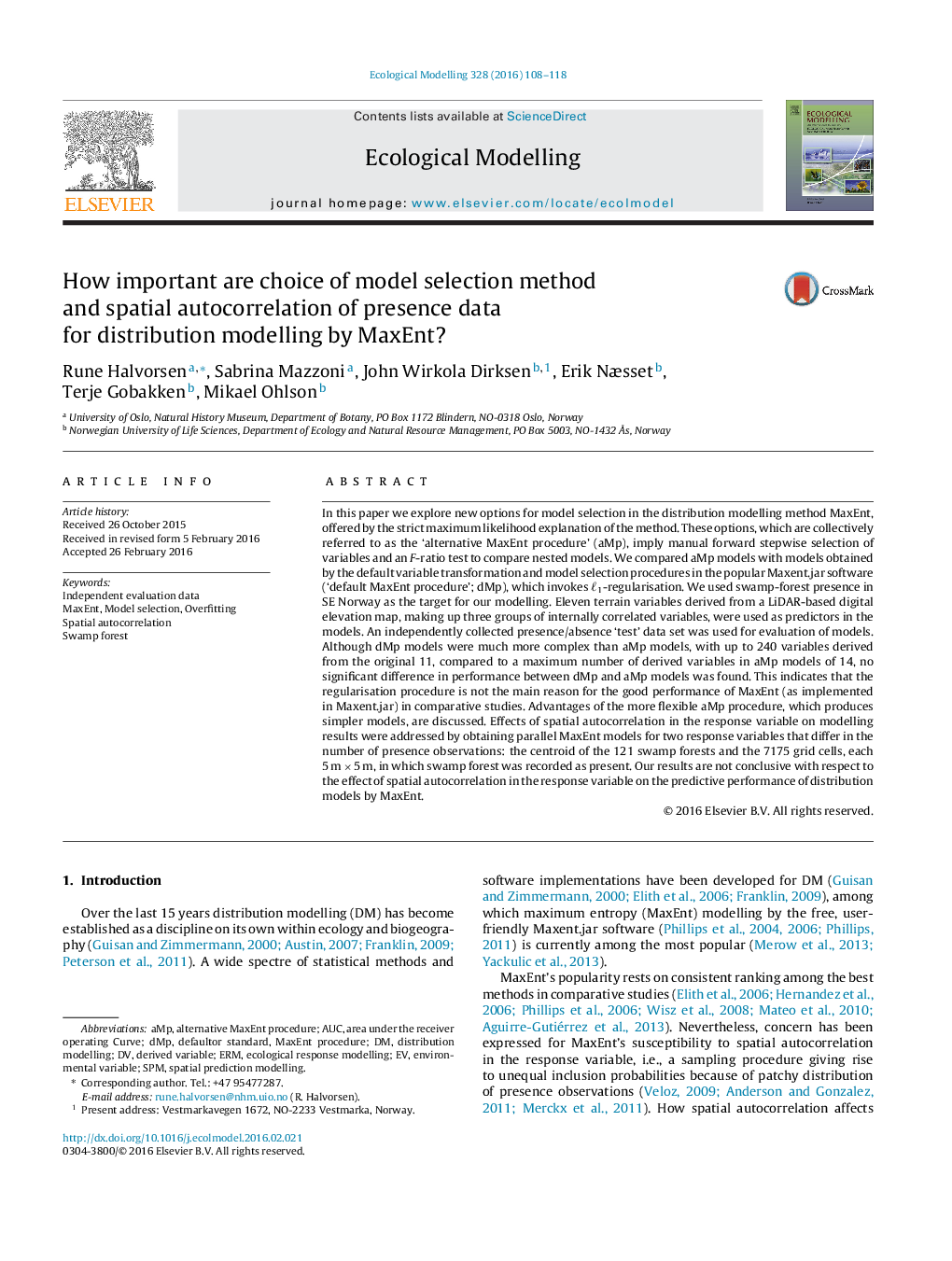| Article ID | Journal | Published Year | Pages | File Type |
|---|---|---|---|---|
| 6296185 | Ecological Modelling | 2016 | 11 Pages |
Abstract
In this paper we explore new options for model selection in the distribution modelling method MaxEnt, offered by the strict maximum likelihood explanation of the method. These options, which are collectively referred to as the 'alternative MaxEnt procedure' (aMp), imply manual forward stepwise selection of variables and an F-ratio test to compare nested models. We compared aMp models with models obtained by the default variable transformation and model selection procedures in the popular Maxent.jar software ('default MaxEnt procedure'; dMp), which invokes â1-regularisation. We used swamp-forest presence in SE Norway as the target for our modelling. Eleven terrain variables derived from a LiDAR-based digital elevation map, making up three groups of internally correlated variables, were used as predictors in the models. An independently collected presence/absence 'test' data set was used for evaluation of models. Although dMp models were much more complex than aMp models, with up to 240 variables derived from the original 11, compared to a maximum number of derived variables in aMp models of 14, no significant difference in performance between dMp and aMp models was found. This indicates that the regularisation procedure is not the main reason for the good performance of MaxEnt (as implemented in Maxent.jar) in comparative studies. Advantages of the more flexible aMp procedure, which produces simpler models, are discussed. Effects of spatial autocorrelation in the response variable on modelling results were addressed by obtaining parallel MaxEnt models for two response variables that differ in the number of presence observations: the centroid of the 121 swamp forests and the 7175 grid cells, each 5 m Ã 5 m, in which swamp forest was recorded as present. Our results are not conclusive with respect to the effect of spatial autocorrelation in the response variable on the predictive performance of distribution models by MaxEnt.
Keywords
Related Topics
Life Sciences
Agricultural and Biological Sciences
Ecology, Evolution, Behavior and Systematics
Authors
Rune Halvorsen, Sabrina Mazzoni, John Wirkola Dirksen, Erik Næsset, Terje Gobakken, Mikael Ohlson,
